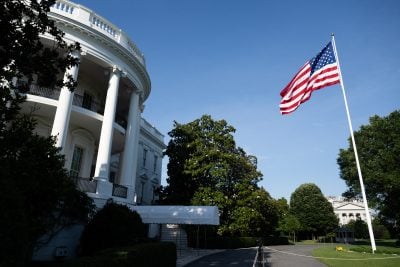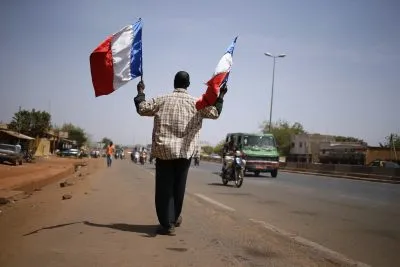Debt distress risks in African countries have accelerated due to the impact of Covid-19 and Russia’s invasion of Ukraine, with increasing numbers of restructuring deals expected to emerge in 2023.
In 2020, G20 countries, which represent the majority of African creditors, implemented the Debt Service Suspension Initiative (DSSI) and the Common Framework to temporarily pause debt payments and assist in debt restructuring respectively.
However, three years later, 22 African countries are identified by the IMF as either already in debt distress or at high risk of debt distress.
If interest rates increase and the US dollar continues to appreciate, debt service costs will rapidly rise and the number of sub-Saharan African (SSA) countries crossing debt service risk thresholds could nearly double by 2024, from 10 to 18.
Countries in debt distress do not necessarily have high debt stocks – what matters is their capacity to service their debt, which is challenged by elevated current costs of funding in tight financial conditions.
Who are the creditors?
In recent months, the inefficiency of the G20 Common Framework has brought to light the complexity of African countries’ debt structures.
According to a working paper released by Paris-based think-tank Financial Development Lab (FDL), one important reason for the slow pace of the process is the huge diversity of the creditors.
“Creditor heterogeneity raises further new issues on how to share the burden of debt restructuring in a fair manner,” says the paper.
This uneven distribution of creditors makes it hard to find a one-size-fits-all approach to debt. For instance, almost 80% of Mozambique’s long-term external debt consists of commercial loans from private banks and is “non-guaranteed”, meaning the debt is not guaranteed for repayment by a public entity. The share in Zambia is much smaller – 35% – and talks on debt restructuring between private, bilateral, and multilateral lenders, which hold the rest of the country’s debt, have experienced delays.
In recent years, private creditors have taken a larger role in the SSA creditor landscape.
While they represented 23% of SSA debt stocks in 2010, they now account for almost 34%, making the debt restructuring process more complicated, as these new creditors “tend to be reluctant to provide debt reduction when they see that official creditors are slow in moving,” according to FDL’s paper.
In addition to creditor diversity, geopolitical tensions between the major Western creditors of the Paris Club and China – which accounts for 12% of Africa’s private and public external debt – have led to a debt restructuring gridlock.
“New emerging market creditors such as China, India, Saudi Arabia and others have not historically participated in coordinated official creditor mechanisms, often preferring bilateral discussions, and current geopolitical divergences make this coordination even more difficult,” says the paper.
Meanwhile, the official structures put in place by the G20 have also failed to act swiftly.
Already in December 2021, the managing director of the IMF, Kristalina Georgieva, said that the G20 Common Framework “must be stepped up” to meet the challenging debt outlook in 2022.
However, over a year later, only Chad has reached an agreement with its creditors under the process, while Zambia and Ethiopia’s talks with creditors are suffering significant delays.
What is a debt wall and why does it matter for Africa?
The situation is becoming ever more urgent. By 2024, African countries are set to experience temporary spikes in debt service costs, also known as “debt walls”.
The rescheduling of many countries’ debts under the DSSI framework to 2024-26, coupled with the coming to maturity of many international bonds, is likely to cause a spike in debt service costs starting as early as next year.
In these circumstances, new loans are required to help African countries adjust their fiscal balances.
However, both private and Chinese lenders, which have become increasingly important in the last decades, seem to be reducing their lending out of fear of financing debt servicing costs to other creditors, creating a “destructive process”, according to FDL’s paper.
This vicious circle has led to a sharp decrease in new disbursed flows, and a rise in debt servicing costs.
Between 2019 and 2020, SSA countries transferred $10.5bn and $1.04bn to their private and Chinese lenders respectively.
This trend is likely to continue as investors want to be paid back, considering the worsening macro outlook.
And African countries are having a hard time accessing the market to fund their debt service costs.
“As of October 2022, market financing options have dried up for most developing countries and a debt refinancing would come at extremely prohibitive costs – if only possible. It would therefore require strong creditworthiness, and a relatively low stock of debt, for refinancing options to remain available,” says a paper released by FDL in November.
How are debts restructured?
A common mode for the restructuring of debt is a three-way deal between a debtor country, international financial institutions (such as the IMF or World Bank), and creditors.
The gridlock in restructuring deals comes from the inherent difficulty of this three-sided bargain.
“The debtor government can afford to undertake adjustment policies – i.e. invest in growth opportunities that pay in the future – only if additional resources are provided. International financial institutions (IFIs) can safely lend those resources only if the old creditors undertake debt reduction. The old creditors, in turn, will provide debt reduction only if the IFIs can apply effective conditionality to debtor governments to ensure appropriate growth policies are in place. The gains that such a package unleashes can be shared among all parties involved,” says FDL’s January paper.
The key to a successful debt restructuring process, therefore, are growth opportunities that can be unleashed in the debtor country.
For instance, Angola’s external debt represents 100% of its Gross National Income, and the country has re-scheduled half a billion of it to 2024-26 under the DSSI framework. However, the oil-exporting country has strong growth prospects: it is supported by a high current account surplus due to higher oil prices which have boosted export revenues.
Want to continue reading? Subscribe today.
You've read all your free articles for this month! Subscribe now to enjoy full access to our content.
Digital Monthly
£8.00 / month
Receive full unlimited access to our articles, opinions, podcasts and more.
Digital Yearly
£70.00 / year
Our best value offer - save £26 and gain access to all of our digital content for an entire year!
 Sign in with Google
Sign in with Google 



